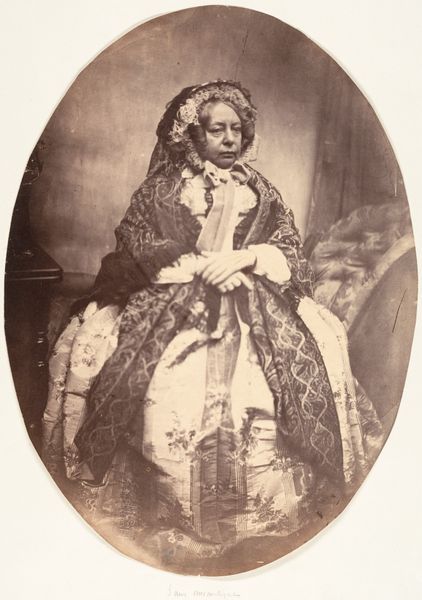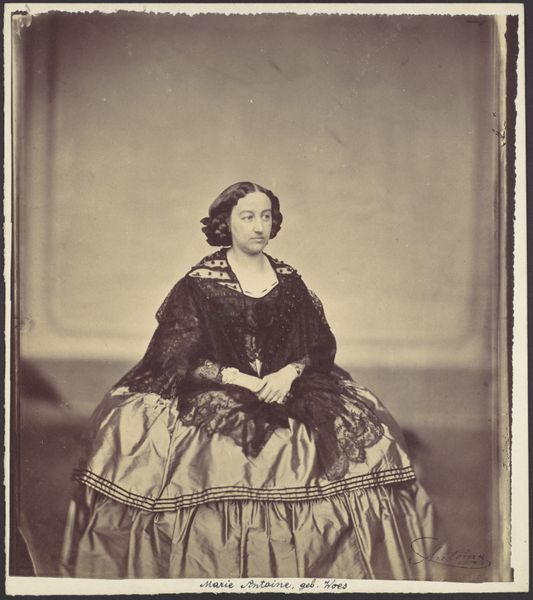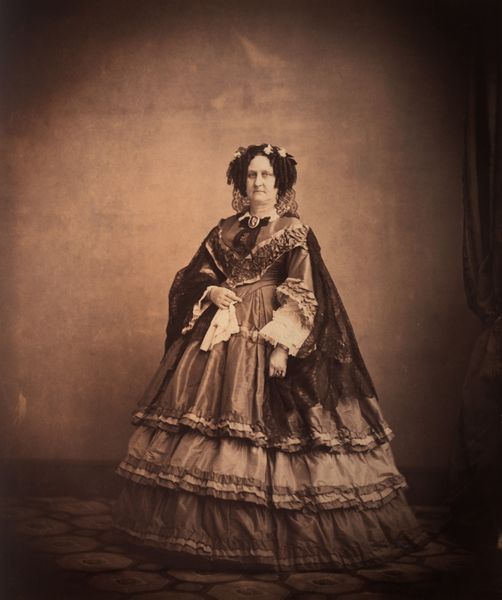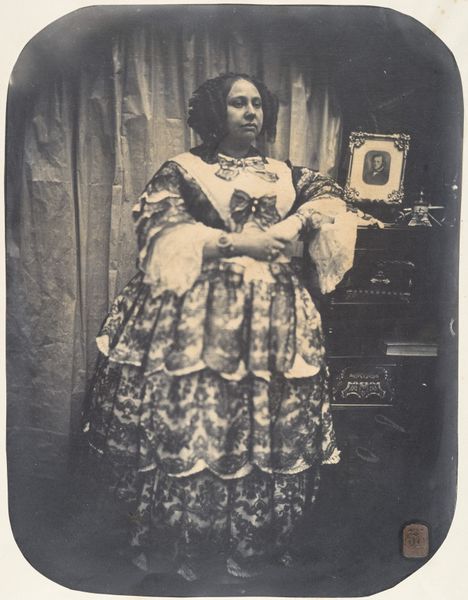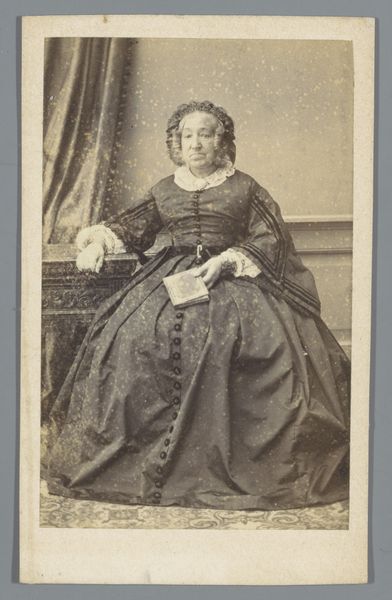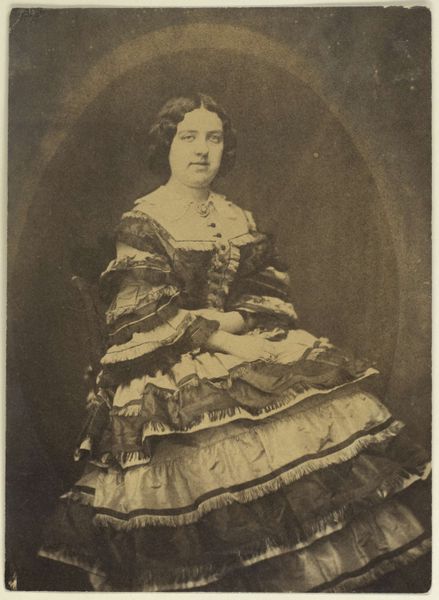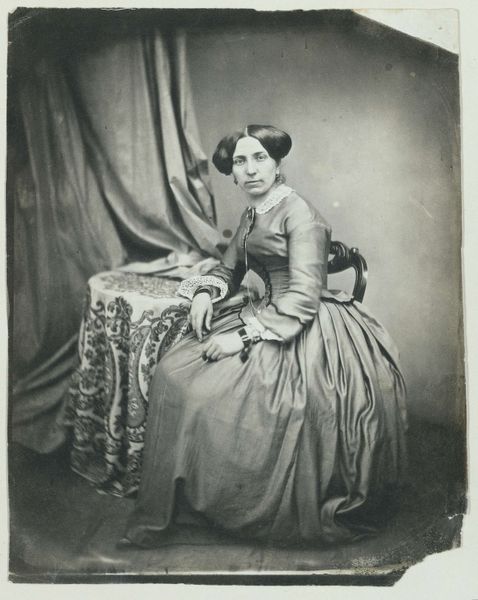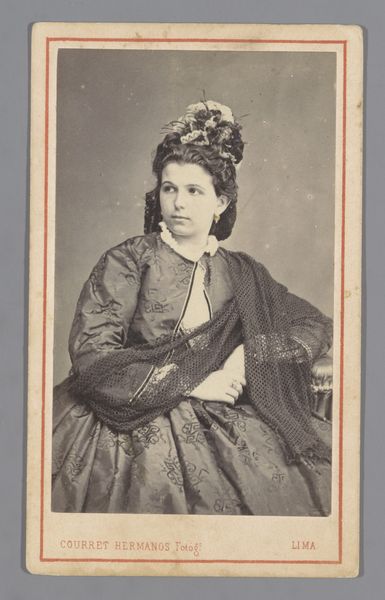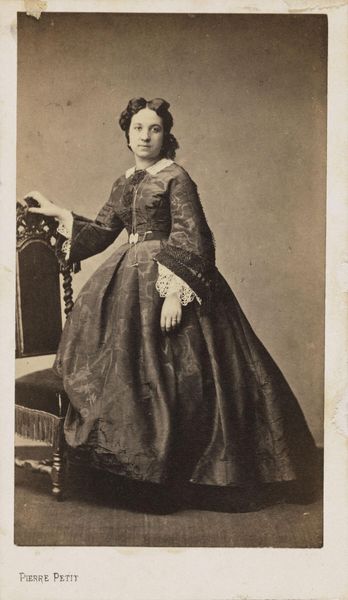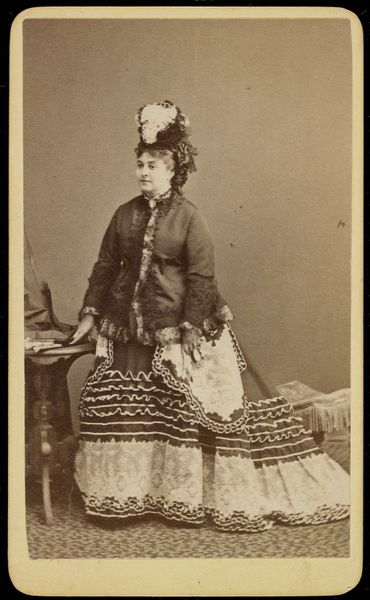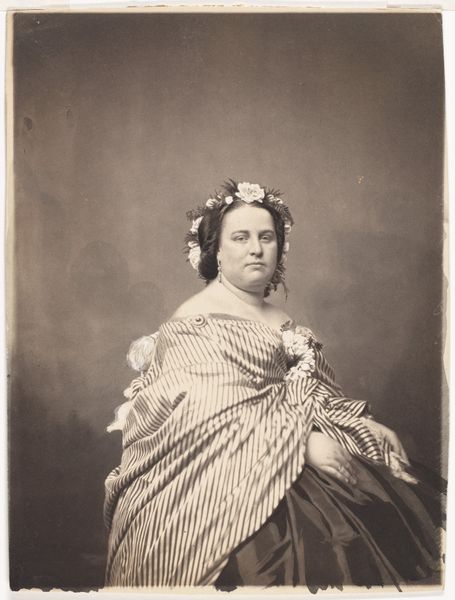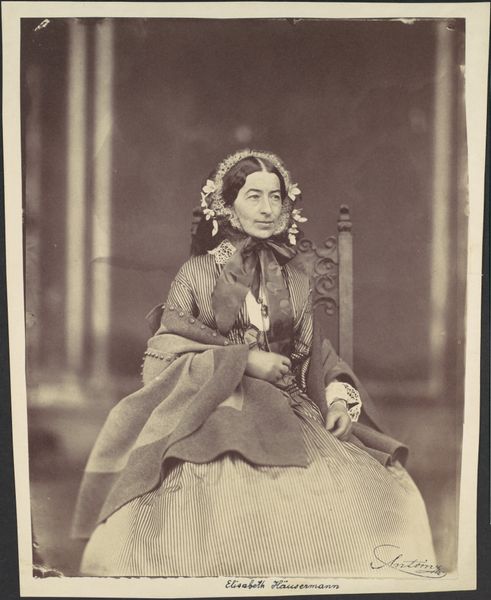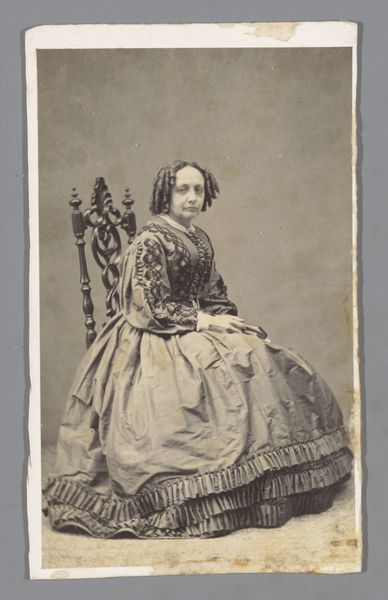
Dimensions: Image: 9 3/8 × 6 13/16 in. (23.8 × 17.3 cm) Sheet: 13 3/8 × 18 1/8 in. (34 × 46 cm)
Copyright: Public Domain
Curator: This is Louis-Pierre-Théophile Dubois de Nehaut’s “En soirée – janvier 1856,” taken in 1856. It is an albumen print currently housed at the Metropolitan Museum of Art. Editor: My initial impression is that the overall sepia toning lends it a certain gravity. The textures created by the layering of the sitter’s gown against the relative plainness of the background also stands out. Curator: Absolutely. Think about the labor involved in the creation of that dress! The layers of lace, the fabric itself. We are seeing a direct reflection of wealth and the social structures of the time. Even the choice of photography as a medium was a deliberate act, offering a more accessible form of portraiture compared to painting, yet still carrying its own set of social connotations. Editor: It's true. Yet I also read something inherently theatrical into the pose. Notice the carefully arranged drapery behind the sitter and the controlled oval framing of the scene. It's not just a record; it’s a constructed reality. And the sharp contrast achieved through albumen printing renders every detail meticulously. Curator: But let's also consider the material conditions. The permanence of albumen printing granted new status to the sitter and opened paths for larger commercial photographic enterprises. The rise of this technology in 1856 had huge socio-economic ramifications beyond a pretty picture. Editor: True, but even acknowledging the photographic industry’s evolution, there is inherent beauty here. The visual interplay of light and shadow across the garment's floral pattern creates an elaborate dance that is very satisfying to view. It reflects the aesthetic values that romanticism placed upon ornamentation, doesn’t it? Curator: And the cultural context – the rise of the bourgeoisie, their desire to emulate the aristocracy... we must remember these prints circulated widely. It made fashion trends accessible across social classes, not just a simple image of beauty or artistry. Editor: I find myself still focusing on the immediate visual qualities and trying to understand how the details contribute to the larger picture, or frame, I should say, even considering all you mention. It remains, for me, an impressive testament to portraiture's potential within even the early stages of photography. Curator: It does offer a great lens, both literally and figuratively, through which we can understand the shifts in nineteenth-century visual culture.
Comments
No comments
Be the first to comment and join the conversation on the ultimate creative platform.
